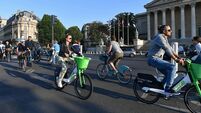Forced to disappear
LAST year, on Jul 15, Abd al Akram al Sakka disappeared. That night, 20 members of Syria’s air force intelligence arrived at his home in the Damascus suburb of Daraya. This frail 68-year-old man, an imam at his local mosque, has not been seen since. He vanished into a network of secret prisons and detention centres run by the Syrian security forces.
His family does not know where he is being held or what condition he is in. They say they don’t even know why he was arrested in the first place. Despite increasingly desperate pleas from his relatives, the Syrian authorities refuse to say what has happened to him. Abd, like thousands more in Syria and in countries on every continent, is one of the disappeared. “Disappearance means that you don’t know anything about them, and even if you know anything — you are always worried that this information is not OK,” his son-in-law Haytham Al Hamwi told Amnesty International.
















